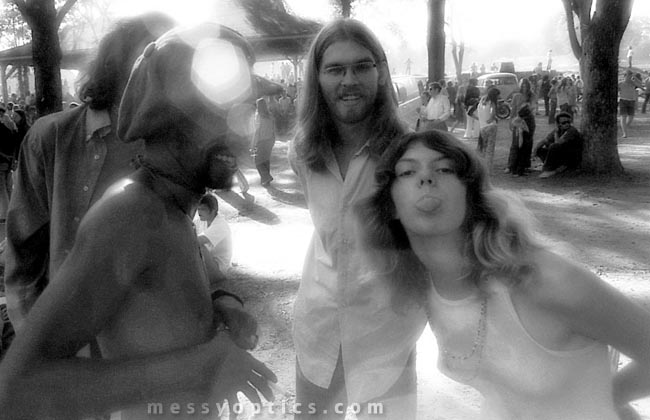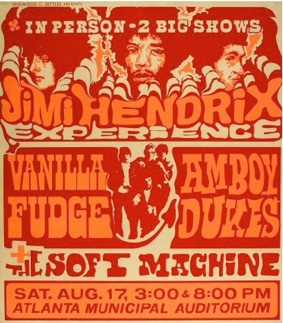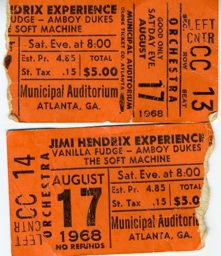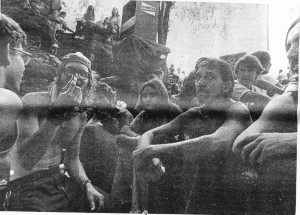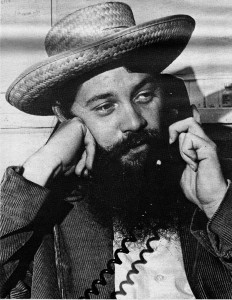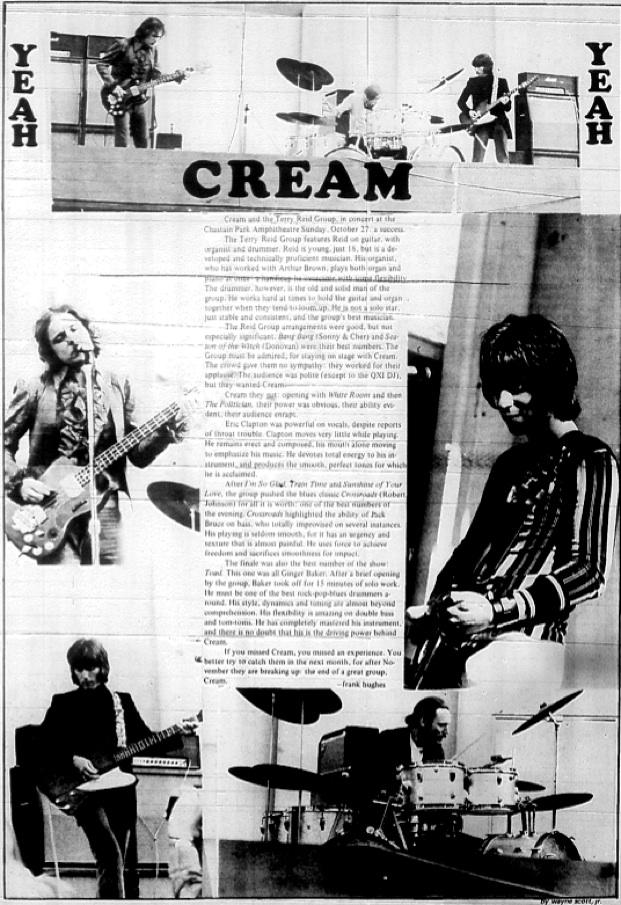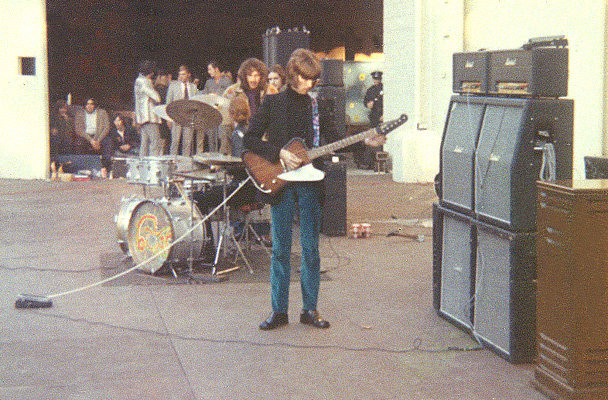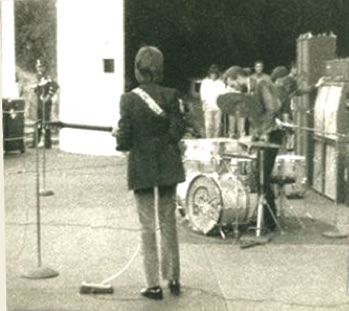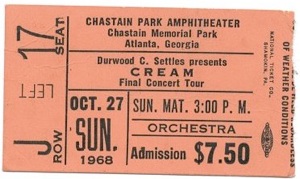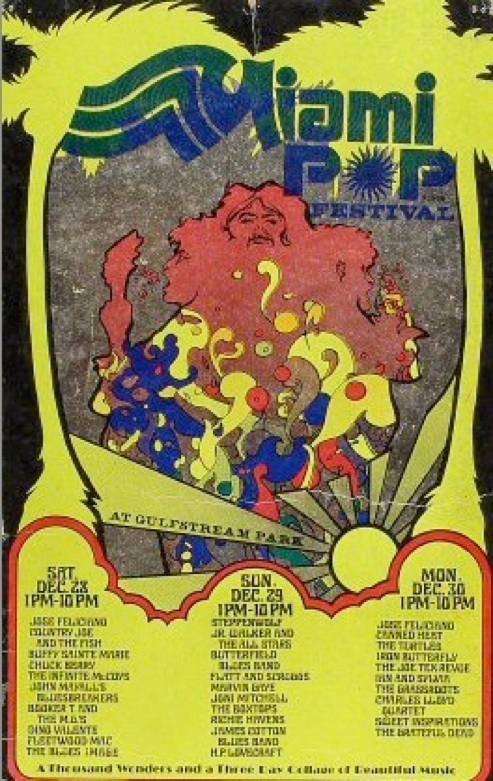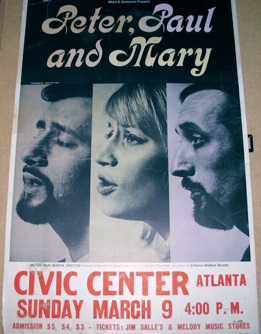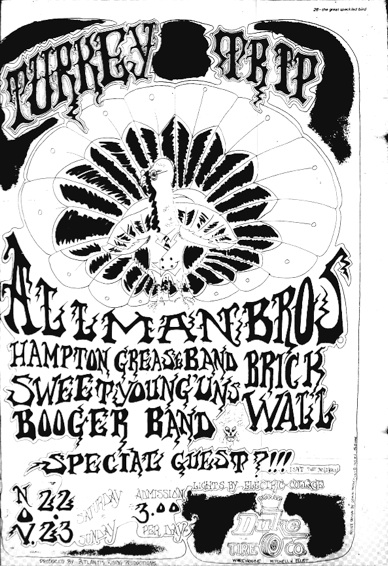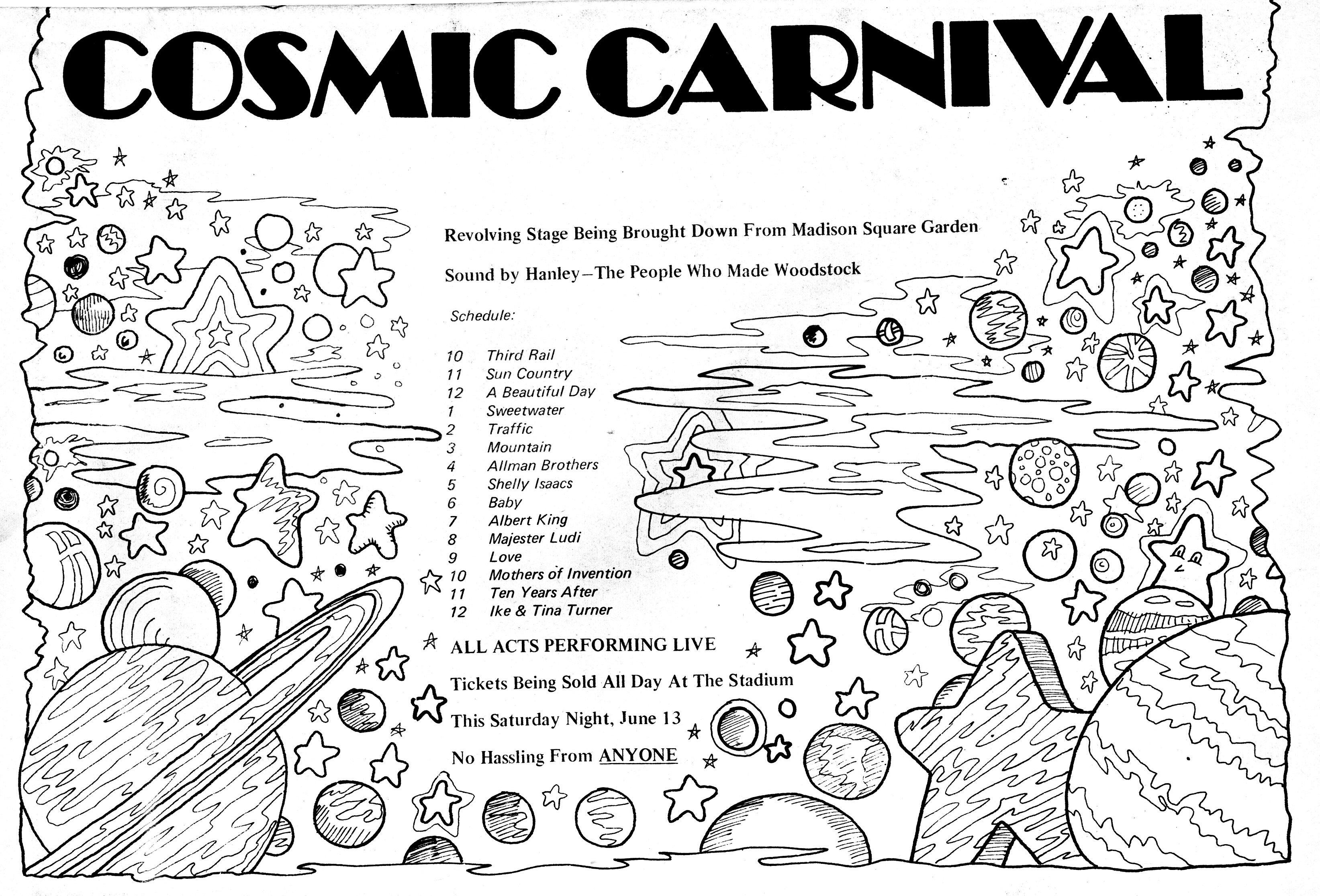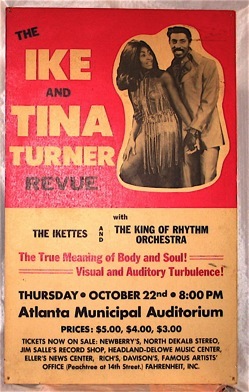woodstock-on-the-water-an-oral-history-of-the-ramblin-raft-race
Category Archives: Community
Dave Hoffman
“…he not busy being born is busy dying…”
The Great Speckled Bird 5/12/69 vol 2 #9 p11
[The layout of the following article and lyrics was nonlinear, with sections and paragraphs arranged around photos and other graphics.]
“I will secretly accept you,
And together we’ll fly South.”
“Leave your stepping stones behind
There’s something that calls for you.
Forget the dead you left, they will not follow you.
The vagabond who’s rapping at your door
Is standing in the clothes that you once wore.
Strike another match–go start anew,
And it’s all over now, Baby Blue.”
“And I’ll tell it and speak it and think it and breathe it
And reflect from the mountain so all souls can see it.
And I’ll stand on the ocean until I start sinkin’
And I’ll know my song well before I start singin’.”
“In a soldier’s stance I aimed my hand
At the mongrel dogs who teach.
Fearing not I’d become my enemy
At the instant that I preached.
My existence led by confusion boats
Mutinied from stern to bow–
Ah, but I was so much older then,
I’m younger than that now.”
Bob Dylan chronicles a newborn musical soul in fetters: hillbilly theatrics and black-face minstrelsy stifle its expression and obscure its real identity. The guitar is raucous and untutored, its forms a parody of the strengths of black bluesmen and white troubadours who sang of hard times. Only the harmonica sings. A rough, fresh humor explodes through all the tradition and the intense preoccupation with death. The sound is uptight, confined. Woody Guthrie is mentor.
The Freewheelin’ Bob Dylan begins the pendulum swing away from the experience of the black man. Traditional white folk and “topical” forms are explored and expanded in a relaxation of the musical tensions of the first album. Interaction between voice and guitar is the keystone–both rough, both searching for a style and a form, but this time creating music in the process. Superlative harmonica offerings continue to hold the straining parts together. “Don’t Think Twice, It’s All Right” presages the sounds to come: a perfect musical and lyrical creation with guitar, vocal and harmonic textures intermeshed in an autonomous unit. The humor is still present, tempered by a growing bitterness.
The Times They Are A-Changin’ continues the reformulation of the topical “protest” song, but this time the humor is absent. The singer becomes a preacher. The harmonica is distilled sadness and anger and fear while the guitar learns discipline.
Another Side of Bob Dylan is the nadir of instrumental and vocal performance. Previous song forms are now totally inadequate: the new wine is bursting the old skins. The voice is increasingly strained and laden with self-pity, the instrumental accompaniment demoralized.
The next album is Bringin’ It All Back Home, but the trip is not into the past, but forward into the present. The sound turns on. Electric instruments are added. The total music is more alive than ever before. The term “folk music” is reinterpreted: the sounds which once came from the broadside now emanate from the jukebox. Teenagers all over the world have the subterranean homesick blues. There is a force, a fire long absent or suppressed. The harmonica soars, the electricity flows freely through the new expanded instrumentation, and the voice begins to work within the path created for it by the music: Guthrie has become the tambourine man.
Highway 61 Revisited lets it all hang out. The musical psyche of youth weeps, laughs and lashes out violently at the absurdity of the old forms it has inherited. Freedom is not a goal to be won; freedom lies in the struggle against these old forms. It is a personal as well as a collective thing.
Blonde on Blonde expands the electric sounds further and mellows them. Musical subtleties abound. Everything bristles, everything sings; the song, the singer, and the sound find a new realm of wholeness where they can move together. The turn-on has proved permanent and produces a vibrant palette of tone colors.
John Wesley Harding is a distillation of all that has gone before. Instrumentation is simpler, more pungent, the song forms less complex and more elliptical. The sound plunges deep into the roots of white country music, and the voice handles its new eminence with grace. The forms are more regional, yet, mystical, more traditional, yet freer, pop but earthy. The voice evokes, it does not preach.
Nashville Skyline is the birth of a new voice: Dylan sings! Both the harmonious and discordant elements latent in the first album are now fused and reintegrated into a new sound. Johnny Cash joins Woody Guthrie. Humor returns not as an imp but as a lover. The old has produced the new. Dylan is now the country cosmopolite. Another struggle, another cycle begins.
The young Bob Dylan is full of words, but they are not his, nor are the forms in which they are expressed: the song is either “to Woody”—
“Here’s to Cisco and Sonny and Leadbelly, too
And to all the good people that traveled with you;
Here’s to the hearts and the hands of men
That ‘come with dust and are gone with the wind”,
–or the experience it speaks of belongs to the black man.
“I’m walkin’ kinda funny, Lord,
I believe I’m fixin’ t’ die.
Oh well, I’m walkin’ kinda funny, Lord,
I believe I’m fixin’ t’ die.
Well I don’t mind dyin’ but I hate t’leave my children cryin’.”
The Freewheelin’ Bob Dylan begins to make his own personal statement, but the old forms continue to dominate. Enter the “message”. Even here “issues” become a cul-de-sac, and moralism gives way to a desire for change itself. Former issues of Right vs. Wrong are compressed into one comprehensive issue–new vs. old: “Get out of the new road if you can’t lend your hand/ For the time’s they are a-changin’.”
This new emphasis upon a radically altering universe of values opens a door to a whole new experience. A verbal manifesto is required as a ticket to ride.
“Good and bad I defined these terms
So clear, no doubt somehow:
Ah, but I was so much older then
I’m younger than that now.”
Love is impossible. “Go away from my window.”
Bringin’ It All Back Home: Rock and Roll brings it all back home to the 20th century. Folk means pop, and the lyrics become looser with greater room for complexities and shifting priorities of meanings. The new freedom allows a place for love minus zero, no limit.
Highway 61 Revisited submerges the Word, now harsh and biting into an orgy of imagery and electric sound: “the songs on this record are not so much songs but rather exercises in tonal breath control (B.D.) “‘Message Man” is now the villain of villains:
“You’ve been with the professors
And they’ve all liked your looks.
With great lawyers you’ve discussed lepers and crooks.
You’ve been through all of F. Scott Fitzgerald’s books,
You’re very well read, it’s well known–
But something is happening here, and you don’t know what it is,
Do you, Mr. Jones?”
The word clusters are now too dense and evocative for any “message” Mr. Jones the Print Man might be able to seek–“There oughta be a law against you comin’ round/ You should be made to wear earphones!”
Blonde on Blonde accepts the new complexity as basic. The savage humor is mellowed and the love strain is amplified. The sprawling, inward turning images can construct a hymn to a “sad-eyed lady of the lowlands” or say simply, “I want you”.
John Wesley Harding compresses the lines into stark, enigmatic song forms in which “Nothing”–and everything–is revealed”. The simple eloquence of country music lyrics is inspiration. Song and setting are one and the same. Words are a means of expression for the voice, now used as an instrument within a total sound.
Folk, pop, country, rock – Nashville Skyline reformulates all the lyrical ingredients of all the previous verbal concoctions into a new, whole in which the voice supersedes the song–“love that country pie”.
Bob Dylan is schizoid, an explosive energy source of youth in a new age struggling to express itself in old forms. Black experience is exploited ruthlessly and wars with the spirit of the dust bowl. A young soul is stretched taut between competing masques. Intuition and fear of death is accurate, but it will be a psychic death, a destruction of the ego. Precariously balanced equilibrium.
The Freewheelin’ Bob Dylan has some room to walk around. The mannerisms and affectations of false experience are channeled into more accommodating vessels. Preoccupation with death becomes horror at the condition of man in the 20th Century, and fear of The Bomb. White folk forms are infused with humor and the balance is maintained.
The Times They Are A-Changin’ tips the scales to the dark side. Humor is gone. Despair, outrage, protest, even vengeance come to the fore. Change is seen as an end in itself.
The split occurs in Another Side of Bob Dylan. Uncertainty rules. The old answers become questions. Withdrawal, beginning of psychosis. Turning inward. There is only one issue now: being “hung up.”
Bringin’ It All Back Home discovers a new source of strength with which to face the trial ahead: electric rock, a new folk music for a new age. The door to the unconscious is opened, the past is irrevocably past.
Highway 61 Revisited gets down in it. All travel is within the psyche. The outside world is a manifestation of the horrors within. Chaos reigns, humor is savage. New forms, new shapes, all is accepted.
Blonde on Blonde reveals a psychic implosion. Dylan gracefully rides the crest of his own mind wave. He has found his own frequency, and the love and humor can again have free play. The conscious and the unconscious are opposite sides of the same experience.
John Wesley Harding forms a synthesis. The wounds begin to heal, and a new vision appears. Rage and humor mellow into wisdom. White soul roots are deeper, flight is unrestrained. Passage from within to without is smooth and free. The Self.
Nashville Skyline is the birth of a new voice. All elements are balanced. Free-flowing sound. Wounds have become strengths. All blends into the love strain. Integration of the individual into the world. A new cycle begins.
“Ain’t it just like the night to play tricks when you’re tryin’ to be so quiet
We’ll sit here stranded, though we’re all doing our best to deny it
And Louise holds a handful of rain tempting you to defy it
Lights flicker in the opposite loft
In this room the heat pipes just cough
The country music station plays soft,
But there’s nothing, really nothing to turn off
Just Louise and her lover so entwined
And these visions of Johanna that conquer my mind.”
“Now the moon is almost hidden
The stars are beginning to hide
The fortune telling lady
Has even taken all her things inside
All except for Cain and Abel
And the hunchback of Notre Dame
Everybody is making love
Or else expecting rain
And the good Samaritan he’s dressing
He’s getting ready for the show
He’s going to the carnival
Tonight on Desolation Row.”
–miller francis, jr.
Jimi Hendrix Blows Atlanta’s mind
Soft Machine, Amboy Dukes, Vanilla Fudge and Jimi Hendrix Experience’s two shows at Atlanta’s Municipal Auditorium blew away Atlanta’s collective mind on Saturday August 17, 1968. Have you ever been Experienced? Now we could answer in the affirmative. Musicians in particular talk about this show nearly 50 years ago!

Bill won’t like I included this, but It was often my vantage
A few remembrances :
Harry Demille
Rupert Fike
Bucky Weatherall
Harry Demille
Harry Demille bridges from The Strip community where he worked at the 12th Gate 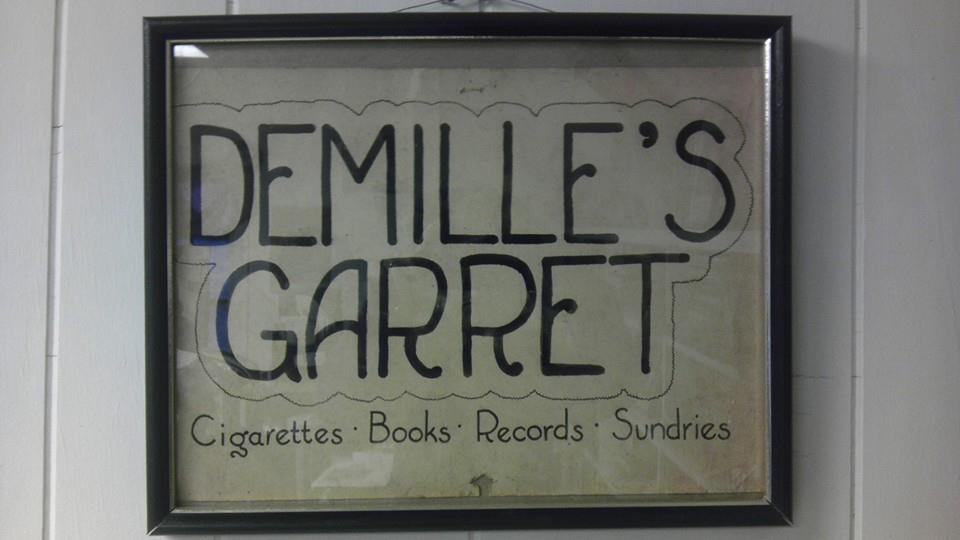 to the Little Five Points community where he co-founded Wax and Facts.
to the Little Five Points community where he co-founded Wax and Facts.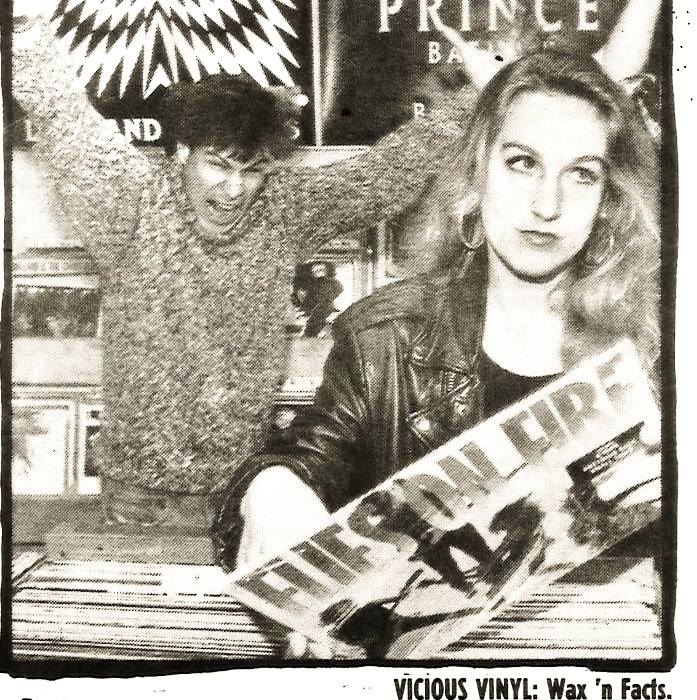
Used-record store Wax ‘N’ Facts co-founder Harry DeMille dies
Since 1976, ‘He liked turning people on to records.’
Harry DeMille (right), with Sean Bourne in 2006, co-founded Wax ‘N’ Facts, a used record store in Little Five Points almost 50 years ago. “The store has been his life,” said his wife, Alice DeMille. “He loved it. It wasn’t about the money, I can tell you that.” AJC FILE
By Phil Kloer For the AJC
In a city where everything always changes, a little used-record store can hold the line.
Wax ‘N’ Facts in Little Five Points has been selling used and new LP records out of flip-through wooden crates for almost 50 years. The decor has been posters, from vintage Jimi Hendrix to next month’s show at Variety Playhouse.
All those decades, co-founder Harry DeMille sat behind the counter, talking music with customers.
“The store has been his life,” said his wife, Alice DeMille. “He loved it. It wasn’t about the money, I can tell you that. He liked turning people on to records.”
Unlike the pop culture stereotype of the too-hip record store clerk who only likes the most obscure bands on the most prestigious vinyl pressings, DeMille was considered to be gracious and fun to hang with as he shared his prodigious musical knowledge of everything from country to punk.
“He and Danny Beard managed to maintain this record store through all the musical tides and trends: Spotify, we hate CDs, we love CDs, we hate vinyl, no, we still love vinyl. They managed to navigate all that,” said Noel Mayeske, a graphic designer and regular Wax ‘N’ Facts customer for decades.
“Wax ‘N’ Facts is part of the soul of our neighborhood. They’re the OGs [original gangsters], the people who were there when it was nothing,” said Kelly Stocks, former president of the Little Five Points Business Association.
Harry DeMille died of cancer April 20 in Piedmont Hospital. He was 74.
DeMille and his friend Danny Beard opened Wax ‘N’ Facts at 432 Moreland Ave., on June 6, 1976. Wax referred to vinyl records, and the facts to books. Although the store still stocks some books, the wax side of the business took over decades ago.
The location had previously been a bicycle repair shop, a bar, and a meat-and-three restaurant.
“The heating and air conditioning unit is connected to the old grease hood line [from the restaurant],” De- Mille said in the 2023 book, “Atlanta Record Stores: An Oral History,” by Chad Radford.
“When we first turned it on, the place smelled like 100-year-old hamburger grease.”
“There is no other neighborhood in the city, at least that I’m aware of, that has changed like Little Five Points,” DeMille said in the oral history. “It was the pits when we opened the store. It wasn’t dangerous, it was just dead. There was nothing going down. Every fourth or fifth storefront was boarded up. Some of them had been for years.”
That same mid-70s era in Little Five Points saw the opening of Charis Books feminist bookstore and Sevananda Natural Foods Market, which helped to make the neighborhood the bohemian enclave it is.
“At the time used records were still kind of a novel thing,” said Radford. “There was a bookstore in Decatur that had a box of secondhand records on the floor you could flip through.”
DeMille and Beard rented the store and went to yard sales to build their inventory. In 1987 they bought the building and expanded to the store’s current size.
“The store hasn’t changed much,” Alice DeMille joked. “They probably still have some of the same dust bunnies in there as when they started.”
DeMille was born at Piedmont Hospital on Feb. 13, 1951, to Harry and Janet DeMille. He graduated from Druid Hills High School in 1969 and lived his entire life in Atlanta except for two years when he was a child. He attended Georgia State University but did not earn a degree.
“He liked to say he was in the film business because he would clean the Film Forum at night after the movies were over,” said Alice DeMille, referring to an old Ansley Mall spot that showed foreign and art films.
Before opening Wax ‘N’ Facts, he also lived in a place called 12th Gate in Midtown, sometimes called “a hippie hangout,” running a shop that sold incense, cigarettes and used records in a box.
In 1979, Alice Kelly was a customer who told DeMille he had accidentally undercharged her on a Nils Lofgren double album; after some flirting, they went to dinner that night. They got married seven months later.
Alice DeMille became the Wax ‘N’ Facts accountant for years. “I realized, wait a minute, they haven’t opened a bank statement in four years,” she said.
“He was mellow, he was friendly, he never overreacted to anything,” says James Kelly, who has performed for years as leader of the bar band Slim Chance & the Convicts, and who drank beer with DeMille occasionally at Euclid Avenue Yacht Club.
“He could talk about just anything,” Kelly continued. “People think he just knew a lot about records, but he was quite the avid reader. He knew a lot about literature and history.”
“Harry was very much an Atlanta history buff,” said his wife. “Both his parents and his grandparents were from Atlanta. He had a wealth of knowledge about Atlanta, especially the changes that have taken place during his lifetime.”
He was diagnosed with lung cancer in late 2023, and did not return to work because of complications.
“He had stories about people who came to the store: Burt Reynolds, Cat Power, Jerry Reed,” said Radford. “When these people are gone, their stories are gone. He was the storyteller.”
Survivors include his wife Alice; brothers David and Donald DeMille; and sister Carol Bridges.
Family and friends are planning a celebration of life. Details will be announced later.
12th Gate
Patti and Judith move from Florence, Alabama to Atlanta
Moving into the 12th Gate
The house of 12th Gate
Little Feat
DeMille’s Garrett
Great houses of the area gone with the wrecking ball
Finding new housing in Little Five Points
Learning about Inman Park
Wax and Facts
cheap housing
Little Five theaters
The Redwood Lounge -dangerous to pass
Peelers
Starting Wax and Facts
Sarah and Sean
New Wave
Hendrix blows Atlanta’s mind
Roy Orbison’s appeal to all ages
Coming to Seminole
Patti and Judith story
Bluesmen
Headshop depends on your frame of reference
Atlanta musicians of the time
bad memories and aging
WRFG blues
Piedmont Park
Debbie Eason interview
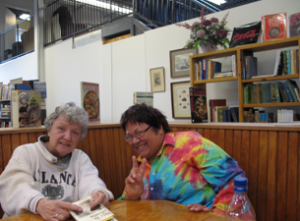
 Debbie Eason is a Creative Loafer extraordinary.
Debbie Eason is a Creative Loafer extraordinary.
Debbie Eason came up with the idea of a FREE newspaper about all the activities in Atlanta, paid for BY THE ADVERTISERS! For a mother to work was still shocking. To be an editor was unheard of in those days. From her efforts was born Creative Loafing. Debbie was all over the area and has some interesting tales. Give her a listen.
All recordings copyright the strip project
Creative Loafing
Women in the 50s
Loaf rising
More Loafing
ERA
Little Five Points
Walking The Strip
Atlanta’s growth
Lane Mills
her sons
finish…
Bongo Interview
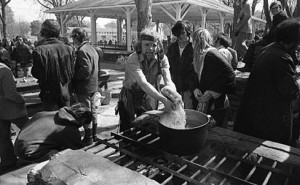 Bongo, Peter Jenkins, was Atlanta’s digger who fed the masses in Piedmont Park, ran crash pads for transient kids, and mediated between bikers and hippies.
Bongo, Peter Jenkins, was Atlanta’s digger who fed the masses in Piedmont Park, ran crash pads for transient kids, and mediated between bikers and hippies.
He has some interesting tales.
All recordings copyright the strip project
Hello from Bongo!
An outside agipotato
Coming to Georgia from Texas
Crashpads
Names
Feeding the people
Reverend Bongo
The Zoo 8th at Penn

Bongo the biker
Bongo Busted!
Leary
Hard Drugs
Why?
The Strip rules
Tree Climbers International
The Allman Brothers
Bongo meets Gov. Maddox
Chit -chat
memories
Peter’s new life
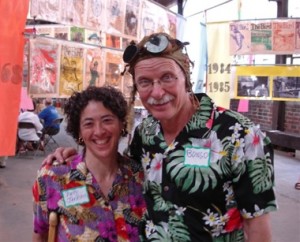
Joe Shifalo (Pig Iron) and Toni Shifalo (La Banana)
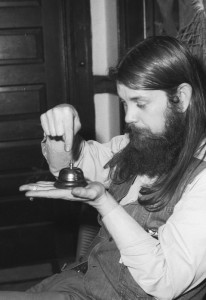
Joe Shifalo, aka Pig Iron, loved music and played guitar and harmonica. He was a lawyer and civil rights activist, and he retired as executive director of the Little Five Points Community Center. The unofficial ‘Mayor of Little Five Points’. (photo on right by Boyd Lewis)


Joe’s partner Toni Shifalo is a local celebrity in her own right as La Banana.
Among other accomplishments she founded the Groundhog Day Juggler’s Festival. She was interviewed a year after Joe’s death and gave an interesting counterpoint to Pig Iron’s story. Amazing how they parallel.
All recordings copyright the strip project
Coming to Atlanta – Joe
Coming to Atlanta – Toni
Living on 15th Street – Toni
Walking The Strip – Joe Shifalo
Toni on The Strip
A headstart trippin’ through the delta – Joe Shifalo
Shifalo Druid Wedding on 15th Street
Druid Wedding by the High Museum – Toni
Leaving The Strip area
Toni’s bad experience
The Allman Brothers in Piedmont Park
The Piedmont Police Riot – Joe Shifalo
Rebellion in the park and the streets – Joe Shufalo
Toni on Piedmont Park
Music in Piedmont Park – Joe Shifalo
Toni on Richards
Toni’s Woodstock Tale
The Woodstock album cover – Toni Shifalo
Little Five Points – Toni
Acid Sun – Toni
Joe on Toni
Robert ‘Joe’ Shifalo, musician, ‘mayor’ of Little Five Points
By HOLLY CRENSHAW The Atlanta Journal-Constitution Sunday, March 29, 2009
There were too many forces pulling at Joe Shifalo — too many battles to fight, too many songs to sing, too many passionate pursuits to take up — for him to settle into a predictable life.
The unofficial mayor of Little Five Points, Mr. Shifalo was a lawyer with a beat poet’s soul. He battled poverty, spun blues records and folksy Southern tales on the radio, and championed the underdog whenever he could.
“If he could have made a living from music, he probably would have done that,” said his wife, Christena Bledsoe of Atlanta. “But he often said that then he would have missed out, because he also was very much the social activist.”
Robert M. “Joe” Shifalo, 65, died of a heart attack March 22 at his Atlanta residence. The body was cremated. Memorial service plans will be announced. R.T. Patterson Funeral Home is in charge of arrangements.
The Florida native lived in New York City in the late 1960s, where he fell in with Dave Van Ronk and other Greenwich Village folk singers. He sang, played guitar and harmonica and performed jug band music and blues songs for the rest of his life.
Most Atlantans knew him under the stage moniker of Pig Iron, but after a bout with lung cancer, he jokingly referred to himself as the bluesy-sounding “Half-Lung.”
He recorded two albums and six CDs, appeared at festivals, coffeehouses and blues clubs, and often performed with his former wife and still-close friend, Toni Shifalo, holding down the beat on her washtub bass.
When the listener-supported radio station WRFG launched in 1973, Mr. Shifalo served as one of its original on-air personalities and launched its long-running “Good Morning Blues” program.
He persuaded the Atlanta Board of Education to rent an abandoned school building for $1 a year and transformed it into the Little Five Points Community Center. The building now houses WRFG and a handful of other arts and community nonprofit groups that help give the neighborhood its bohemian character.
He volunteered with the Atlanta Planning Board, spearheaded neighborhood groups and helped save the Candler Park golf course, on top of his career as an attorney and civil rights activist.
Armed with a degree from John Marshall Law School, he fought poverty through his work with Economic Opportunity Atlanta and battled discrimination as executive director of Metro Fair Housing Services.
“Joe was a child of the ’60s,” said Foster Corbin of East Point, the current executive director of Metro Fair Housing. “He thought all people should have equal access to housing and to the law and to all the things that white, straight males get in this country.”
Mr. Shifalo was free-thinking, unconventional and unconcerned with how people dressed or looked, his wife said. He created folk art paintings and loved to study the exotic birds near his second home in Cedar Keys, Fla. He gravitated to science-fiction novels, she said, because they made him think about the future.
“Joe really believed in social change,” his wife said. “He thought by now we’d be further ahead than where we are, but he loved to talk about how much things had changed since his childhood.”
When he retired in January as executive director of the Little Five Points Community Center, his send-off was a sprawling, sentimental shindig. When his death was announced on WRFG, admirers lit up the phone lines.
“Joe was a performer, but on a private level he was very tender,” his wife said. “After they told me he had died, I was touching him and could still feel all of this love coming out of him, because he had so much love for so many people.”
There are no other immediate survivors.
You survive in the folks of Little Five Points, Pig Iron.
The Bird Reviews Cream at Chastain
After Jimi Hendrix we really felt excited about Cream coming to Chastain park. This was among the most memorable moments for many, and is still a touchstone for many memories today. My understanding mother brought a carload of folks for my going away to college concert. Hope you were lucky enough to have been there.
Apologies – have misplaced credits for the pictures of Cream in Atlanta. Contact if you know.
Major Events in the community
The Beatles came to Fulton County Stadium. For most of my generation this event put Atlanta on the map; we mattered down here in the sleepy South because The Beatles came here. And had their first experience with stage monitors thanks to an Atlantan.
When Jimi Hendrix played the chitlin circuit, he’d had an apartment on Pine St. near Auburn Avenue. Hendrix had played Atlanta opening for The Monkees, but was booted from the tour after the afternoon performance as judged not suitable for children. Now he took the Municipal Auditorium with The Experience.

Bill won’t like I included this, but It was often my vantage
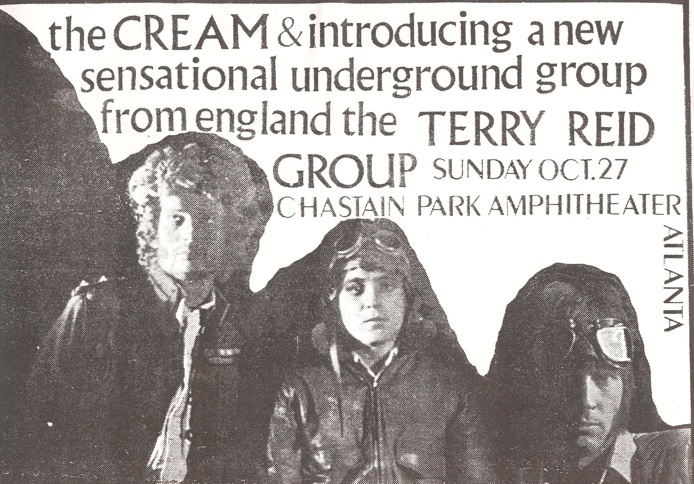 Cream at Chastain Another concert that people use as a marker in their lives. My mother brought a crew of siblings and friends to join me from college. She’d lived with my brother’s and my band practicing at the house and said Cream was loud, but good. She said she was glad I had not had a set of drums as complex as Ginger Baker.
Cream at Chastain Another concert that people use as a marker in their lives. My mother brought a crew of siblings and friends to join me from college. She’d lived with my brother’s and my band practicing at the house and said Cream was loud, but good. She said she was glad I had not had a set of drums as complex as Ginger Baker.
Stomp Atlanta’s Texas Hair, a hippie musical put on by a combine of musicians, actors, and craftspeople. The performance at the Arts Alliance ended with the whole audience led outside holding hands with The Combine members to form a huge circle around The High Museum. They returned to Atlanta in an old church in Buckhead, which was soon firebombed.
 2001 was the movie that launched a thousand trips, most without chemical aids. The ending ride was indeed psychedelic and beautiful. At that time 2001 seemed infinitely distant when computers
2001 was the movie that launched a thousand trips, most without chemical aids. The ending ride was indeed psychedelic and beautiful. At that time 2001 seemed infinitely distant when computers like HAL ran things. The movie was shown in a theater on Peachtree. When you left HAL there was the big IBM, the newest in computers on display in the window next door. Move IBM back a letter each and get HAL?
like HAL ran things. The movie was shown in a theater on Peachtree. When you left HAL there was the big IBM, the newest in computers on display in the window next door. Move IBM back a letter each and get HAL?
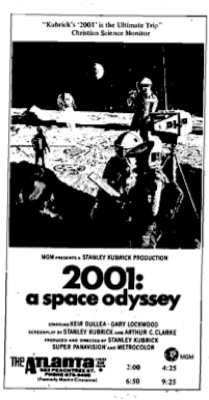 New band Little Feat woodshedding in a small club, the 12th Gate! 2 shows nightly! 3 nights! A buck a show!!!
New band Little Feat woodshedding in a small club, the 12th Gate! 2 shows nightly! 3 nights! A buck a show!!!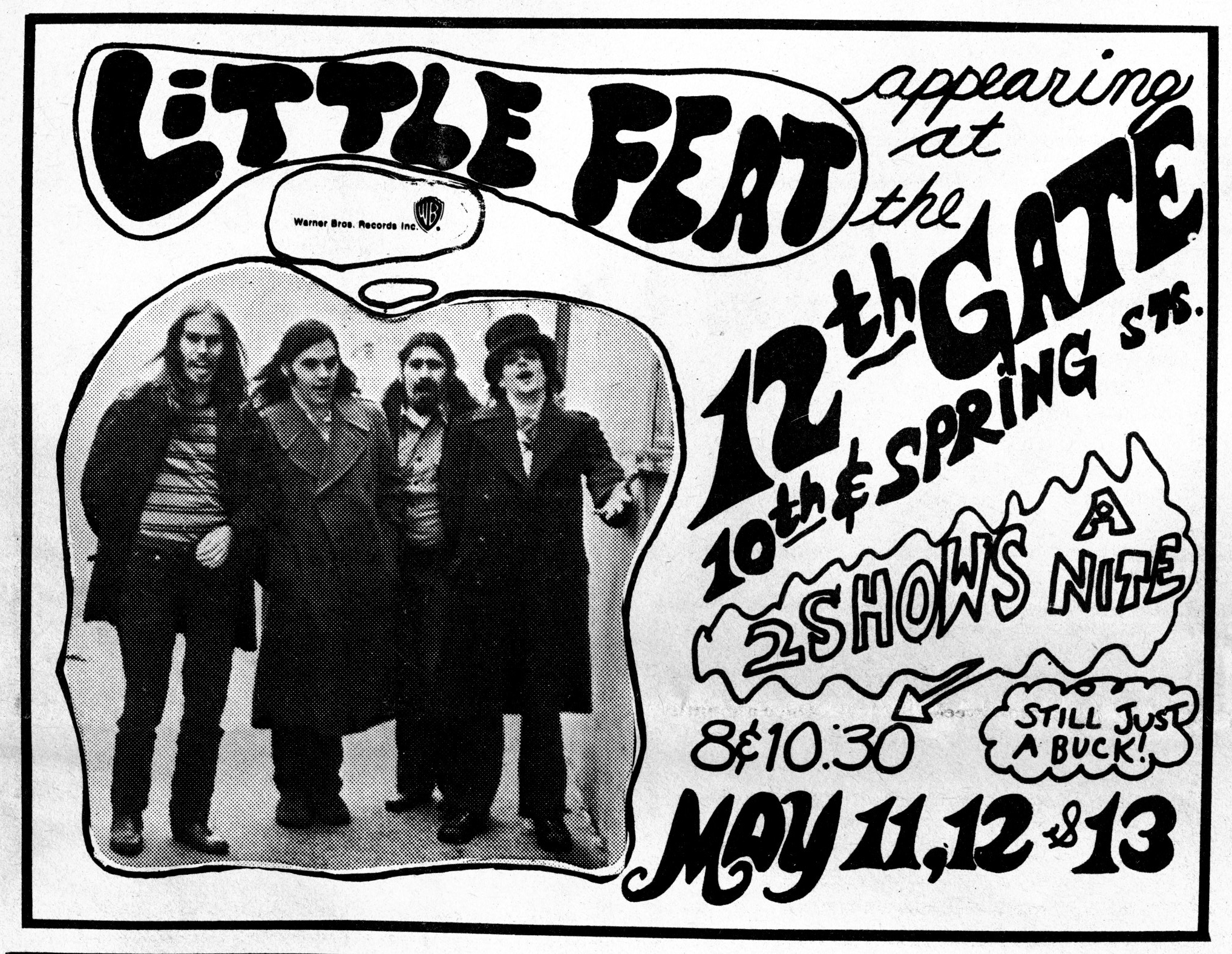
Ike and Tina rocked out the Auditorium to an integrated crowd. Later they returned to open for ZZ TOP on a makeshift stage near Lake Spivey. Carter Tomassi took some great pictures here.
